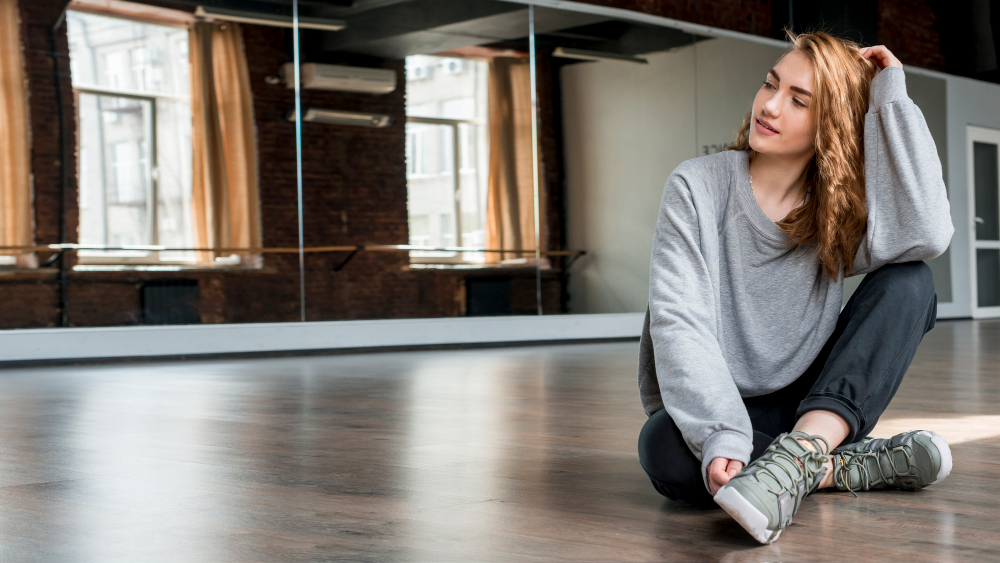How To Choose Flooring That Looks Good And Prevents Falls

Table Of Contents
So here’s the thing — when most of us pick flooring, we’re thinking colour, pattern, vibe. The “look.” I mean, who doesn’t want something that ties the room together?
But, here’s what usually slips by (pun intended): safety.
Slips and falls happen all the time. Kitchens, hallways, bathrooms — those spots are danger zones. The cool part?
You actually don’t have to choose between style and safety. With a little planning and some know-how, you can have both. Thus, people have to pick slip-resistant flooring for safety.
Why Safety Should Be Part Of Every Flooring Decision: Importance Of Slip-Resistant Flooring
We walk on floors every single day, but barely think about how they affect safety. Kids running, grandparents shuffling carefully — the surface underfoot matters more than we realise.
Every flooring type — tile, timber, vinyl, whatever — has its own grip level. Some are naturally good, others not so much. Then throw in moisture, cleaning products, lighting… things change fast.
That’s where floor slip testing comes in. It’s basically a check to see how slippery a surface is. Sounds boring, sure, but it’s practical — and especially worth it if you’re setting up a workspace or rental property. Keeps you stylish and compliant.
Understanding The Types Of Slip Resistance Flooring
“Slip resistance” just means how much traction the floor gives when you walk on it. In Australia, it’s rated by the “R” scale — R9 (least grippy) to R13 (most).
Quick guide:
1. R9–R10 Slip Resistance Flooring
R9-10 provides the least amount of slip resistance. Moreover, the tiles of these grades are used in dry areas.
These dry indoor areas include living rooms, bedrooms, and offices, among others.
2. R11 Slip Resistance Flooring
The R-11 grade is used for slightly damp zones. Moreover, this includes areas such as laundry rooms, entryways, and shops.
3. R12–R13 Slip Resistance Flooring
R12-13 is used for areas that remain constantly wet. Moreover, this includes spots like bathrooms, pool decks, patios, and several others.
Moreover, the flooring’s purpose is also relevant. Furthermore, things like who is walking and other things are equally important. Thus, they should influence people’s decisions.
So yeah, before deciding, think about who’s walking there, how often, and whether the floor ever gets wet. Makes a world of difference.
Flooring Materials That Combine Beauty And Safety
Alright, let’s talk materials — some look great and still manage to be safe underfoot.
1. Vinyl Flooring
Vinyl used to be… well, kind of tacky. Not anymore. Modern vinyl’s totally different — looks like timber or stone, feels soft, cleans easily, and it’s naturally water-resistant.
Many luxury vinyl planks or tiles come with anti-slip finishes already. Great for kitchens or bathrooms. They’re also a bit cushioned, which means fewer bruises if someone takes a tumble (been there).
2. Textured Tiles
Tiles are classic, no doubt. They last forever and look good everywhere. The trick is avoiding the shiny, glazed ones — they turn into ice rinks when wet. Go for matte or textured tiles instead. Porcelain or ceramic with an R11–R12 rating usually does the trick.
If you love the glossy look, no worries — add a non-slip coating. It’s basically invisible but adds grip.
3. Timber And Laminate Flooring
Nothing beats the warmth of real timber. But polished wood can be slippery, especially when waxed. A matte or lightly brushed finish fixes that easily.
Laminate is a solid alternative. Just pick one with a textured surface. And if you’ve got busy areas (kids, pets, etc.), throw down non-slip mats — easy win.
4. Carpet And Carpet Tiles
Carpet’s kind of underrated now, but it’s one of the safest options out there. Cushiony, warm, forgiving. Perfect for bedrooms or stairs. Downside? Not great for wet areas.
Carpet tiles are handy though — simple to replace if one gets stained, and still add that soft traction underfoot.
5. Rubber Flooring
Rubber’s not everyone’s first choice, but honestly, it’s a superstar for safety. You’ll see it in gyms for a reason — soft, durable, shock-absorbent. Not exactly the most common for living rooms, sure, but great in garages or play areas.
The Role Of Lighting And Colour
Here’s something people rarely think about — lighting and colour can mess with perception. Super glossy floors can reflect light and confuse depth, especially for older adults.
So, stick to low-sheen finishes. And with colour? Mid-tones are safest — not too dark, not blindingly light. A little contrast between your floor and the walls helps define edges and improves spatial awareness.
Basically, your eyes should know where the floor stops and the wall starts. Simple but effective.
Maintenance Matters
Even the best flooring turns dangerous if it’s dirty or poorly maintained. Some quick tips:
- Skip waxy or oily cleaners — they make things worse.
- Wipe spills right away (yeah, even tiny ones).
- Mats at entryways help a lot — trap dirt and water before it spreads.
- Keep an eye out for wear and tear — lifted edges, loose tiles, frayed carpet.
For commercial spaces, regular slip testing isn’t overkill — it keeps you compliant and safe.
Adapting Flooring For Older Adults And Mobility Needs
As people get older, balance and vision change, and flooring choices matter even more.
A few basics:
- Choose smooth but non-slip surfaces that work with walkers or wheelchairs.
- Avoid thick carpets — they slow movement.
- Keep floors consistent from room to room. No sudden bumps or texture jumps.
- Add an underlay under vinyl or rubber to cushion falls, but still keep stability.
Tiny tweaks, but they make life a lot easier (and safer).
Balancing Aesthetics And Function While Pitching A Slip-Resistance Flooring
Safety and style can actually go hand in hand now — seriously. Manufacturers have figured it out.
Want that stone look but without the cold feel? Textured porcelain. Craving a rustic timber vibe? Vinyl planks with grain details. Want that seamless indoor-outdoor transition? Same tone, different slip ratings — simple trick.
And small details like rugs, skirting boards, or patterned tiles can make the space pop while keeping it practical.
The Smart Way To Choose Slip Resistance Flooring
Before deciding, think about the room’s purpose — who uses it, how often, and under what conditions. Start with safety, then look at comfort and design.
Bring home samples and test them. Seriously — walk on them barefoot, in socks, with shoes. See how they feel. And if you’re renovating from scratch, a quick chat with a flooring pro can save a ton of future headaches.Because flooring isn’t just “part of the look.” It’s how the whole space feels. A good choice means a room that looks beautiful, feels comfy, and keeps everyone upright. And hey, that’s a win-win if you ask me.

























